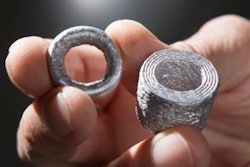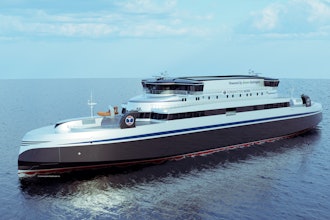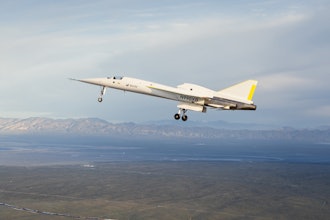At IMTS 2016, I met with Vader Systems to learn more about the company’s Mk1 Experimental, which is the first MagnetoJet 3D printer in the world, according to the company.
The Mk1 is the brainchild of father and son design team Scott and Zachary Vader. The idea for the company started around 2011 when an 18-year-old Zack designed a micro-gas turbine generator. He thought he was on to something, but then climbed that one hill where so many projects go do die, manufacturability, particularly cost.
Traditional methods were out of the question, so Zack turned to 3D metal printing when he hit another snag, he couldn’t find anyone in the U.S. that could help him manufacture the part. So father and son set out to do it on their own, and from what I saw in Chicago, they’ve done a pretty fine job so far.
The MagnetoJet 3D Printer is a patent-pending technology built upon Magneto Hydro Dynamics, which is when you manipulate liquid metal with magnets, and Liquid Metal Jet Printing.
The printer works by pulling Aluminum or aluminum alloy wire into a ceramic chamber and heating it to 750°C. After it turns it to a molten state, the material is electromagnetically pulsed, which causes a droplet to form and eject from a ceramic nozzle.
According to the company, the MK1 can deliver 1000 droplets, each from 200-500 microns in size, onto a 12” x 12” x 12” build envelope.
The parts are fully dense, though the company has not yet heard back on tolerance tests performed prior to the show. When it prints in 500-micron droplets, it can print about 1-lb of material per hour. And according to Janae Pitts, the Vader Systems Director of Business Development, the system is twice as fast as powder bed fusion printers on the market.
The company will manufacture five of the Mk1 Experimental – the first went to Denis Cormier at RIT’s College of Engineering — before they scale up production. According to the company’s website, the company expects to roll out an Mk2 in 2018 that will print parts 30-times faster than the Mk1 and use 10 printing heads.
This is IEN Now with David Mantey.






















